Corporate Governance for Banks in Southeast Europe: Policy - IFC
Corporate Governance for Banks in Southeast Europe: Policy - IFC
Corporate Governance for Banks in Southeast Europe: Policy - IFC
Create successful ePaper yourself
Turn your PDF publications into a flip-book with our unique Google optimized e-Paper software.
exam<strong>in</strong>ations permit a systematic evaluation of a bank’sMeet<strong>in</strong>gs with Bank Boardsgovernance is uncerta<strong>in</strong>. It is common that supervisorsonly meet with boards when there is a problem.“We have found…that the supervisor…doesFurthermore, local supervisors rarely have a clear view not have <strong>in</strong>teraction with the board; theyof the structure of responsibility and authority with<strong>in</strong> have a lot of <strong>in</strong>teraction with management.group structures, which makes it difficult <strong>for</strong> them It is surpris<strong>in</strong>g…how many supervisors doto <strong>for</strong>m a global picture as to where the weaknesses not meet with the board on a regular basis.”might lie <strong>in</strong> the group. At present, there is no clearEsad Zaimovic, Montenegroconcept of what criteria are to be used and howto monitor the process of implementation of goodgovernance. Supervisors’ ability to make mean<strong>in</strong>gfulcomparisons of governance between banks is alsolimited by the lack of a standardized supervisory report<strong>in</strong>g process.F<strong>in</strong>ally, some concern has been expressed over the tendency of regulators to rely on checklists and box-tick<strong>in</strong>gexercises <strong>for</strong> their monitor<strong>in</strong>g responsibilities. Checklists and box tick<strong>in</strong>g are often criticized, though they havethe merit of ensur<strong>in</strong>g that all issues of relevance are at least considered. Their weakness is that the issues maynot be exam<strong>in</strong>ed <strong>in</strong> sufficient detail to reveal deficiencies or risks. Nor is it clear how <strong>in</strong>dividual componentson a checklist may <strong>in</strong>terrelate or how they affect the risk of the bank. Ultimately, checklists can work ifapplied <strong>in</strong>telligently by <strong>in</strong>dividuals who understand the substance. Gett<strong>in</strong>g at the substance requires time andmay call <strong>for</strong> additional tra<strong>in</strong><strong>in</strong>g <strong>for</strong> supervisory staff.Recommendations:Monitor<strong>in</strong>g bank governance: The monitor<strong>in</strong>g of bank governance should be <strong>for</strong>malized and strengthened.The basis of any monitor<strong>in</strong>g should be an agreed standard of governance. Standardized frameworks <strong>for</strong> theanalysis of banks will make evaluations more rigorous and allow <strong>for</strong> <strong>in</strong>terbank comparison. Supervisors shouldthemselves be held accountable and report on their own progress <strong>in</strong> enhanc<strong>in</strong>g governance <strong>in</strong> the bank<strong>in</strong>gsystem.Meet<strong>in</strong>gs with bank boards: Supervisors should meet regularly with boards and chief risk officers, orequivalent, dur<strong>in</strong>g visits and <strong>in</strong>spections. This <strong>in</strong>cludes subsidiary boards. Supervisors should require the fullboard to meet locally at least once a year. The supervisor should meet annually with the board to discusscurrent issues, even when the bank is <strong>in</strong> satisfactory condition. These meet<strong>in</strong>gs should be conducted locally.Understand<strong>in</strong>g home-subsidiary relations: To vary<strong>in</strong>g extents, supervisors place confidence <strong>in</strong> the abilityof head offices to oversee their local subsidiaries. This trust should not turn <strong>in</strong>to bl<strong>in</strong>d confidence. Supervisorsneed to develop the capacity to look through to the parent’s control systems. Supervisors should be awareof and understand the scope of report<strong>in</strong>g and oversight provided by head offices, <strong>in</strong> part by review<strong>in</strong>g thenature and configuration of key reports. If obvious gaps exist, it may require dialogue between the supervisor,the parent and the subsidiary and understand<strong>in</strong>g of the issue or risk by all parties.<strong>Corporate</strong> <strong>Governance</strong> <strong>for</strong> <strong>Banks</strong> <strong>in</strong> <strong>Southeast</strong> <strong>Europe</strong> <strong>Policy</strong> Brief 53


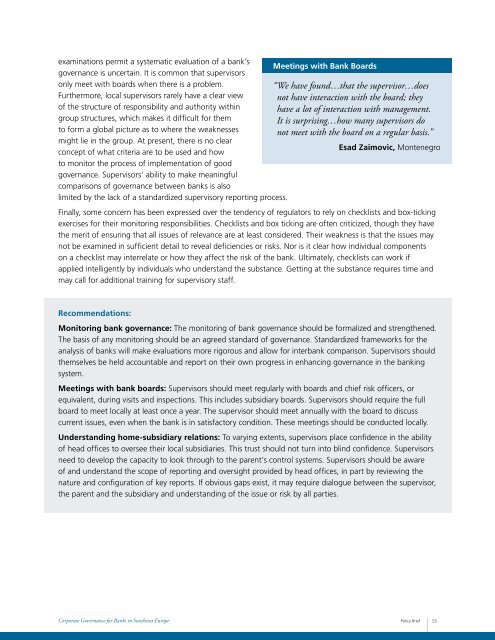
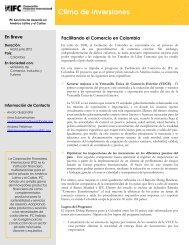
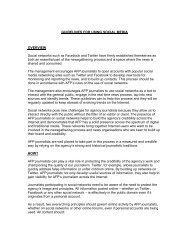
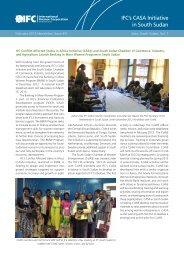

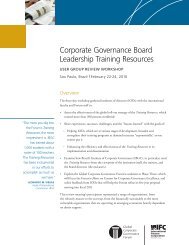




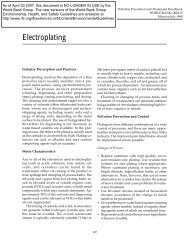
![Print a two-page fact sheet on this project [PDF] - IFC](https://img.yumpu.com/43449799/1/190x245/print-a-two-page-fact-sheet-on-this-project-pdf-ifc.jpg?quality=85)


